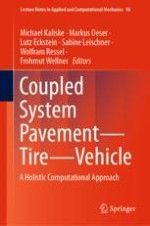This book summarizes research being pursued within the Research Unit FOR 2089, funded by the German Research Foundation (DFG), the goal of which is to develop the scientific base for a paradigm shift towards dimensioning, structural realization and maintenance of pavements, and prepare road infrastructure for future requirements. It provides a coupled thermo-mechanical model for a holistic physical analysis of the pavement-tire-vehicle system: based on this model, pavement structures and materials can be optimized so that new demands become compatible with the main goal – durability of the structures and the materials. The development of these new and qualitatively improved modelling approaches requires a holistic procedure through the coupling of theoretical numerical and experimental approaches as well as an interdisciplinary and closely linked handling of the coupled pavement-tire-vehicle system. This interdisciplinary research provides a deeper understanding of the physics of the full system through complex, coupled simulation approaches and progress in terms of improved and, therefore, more durable and sustainable structures.
